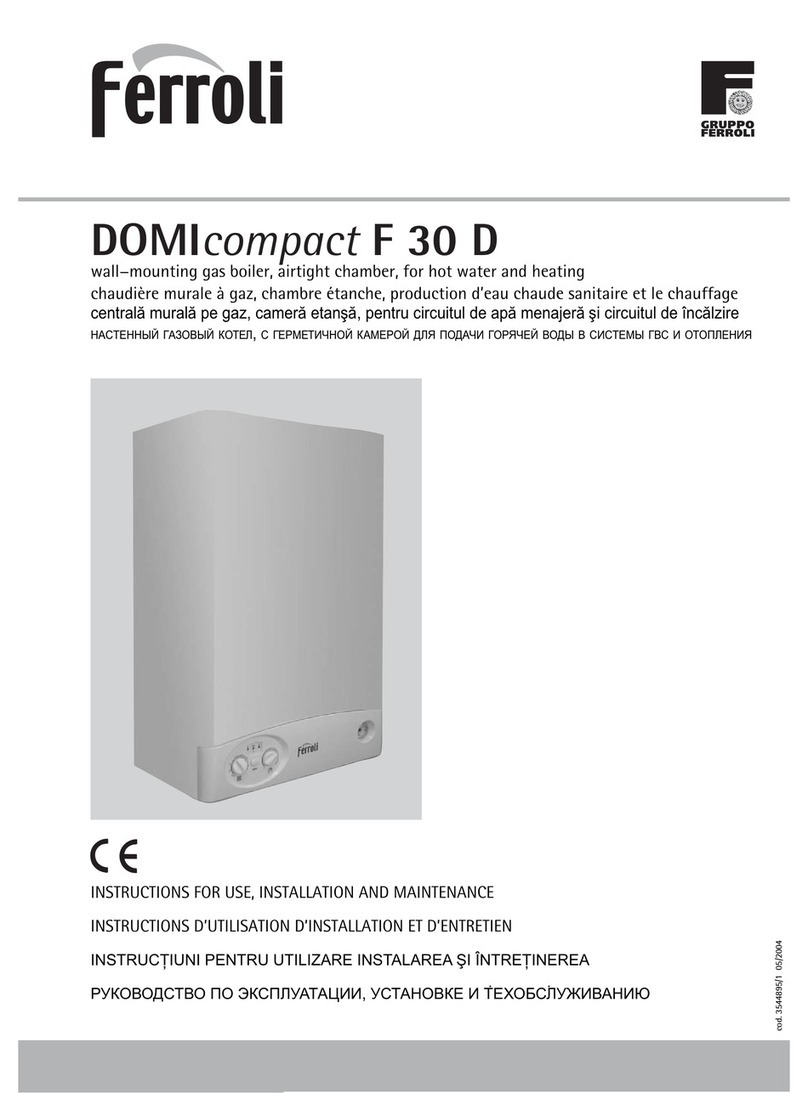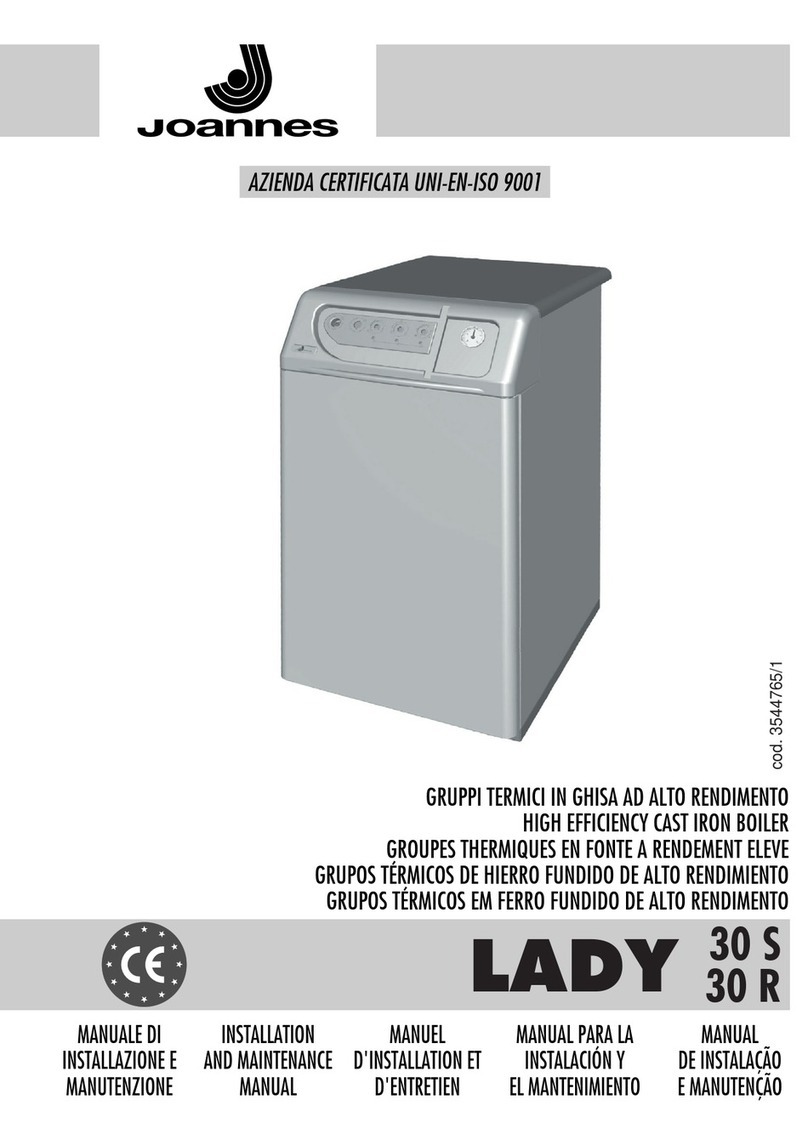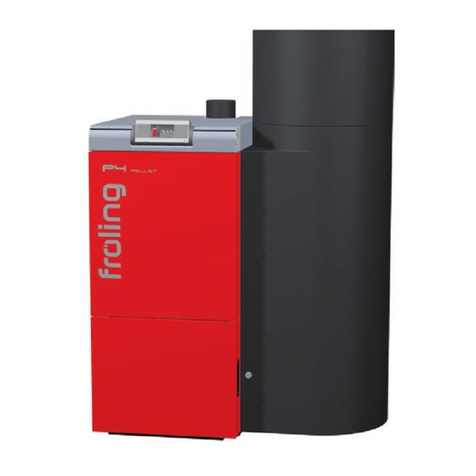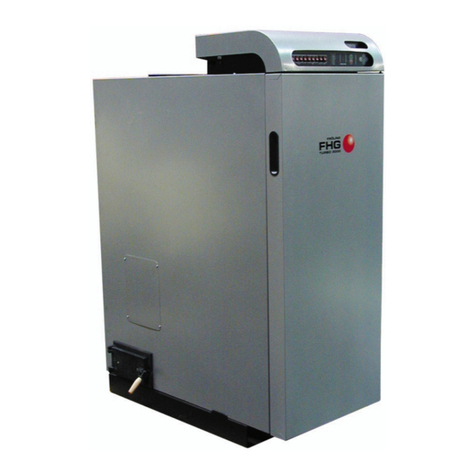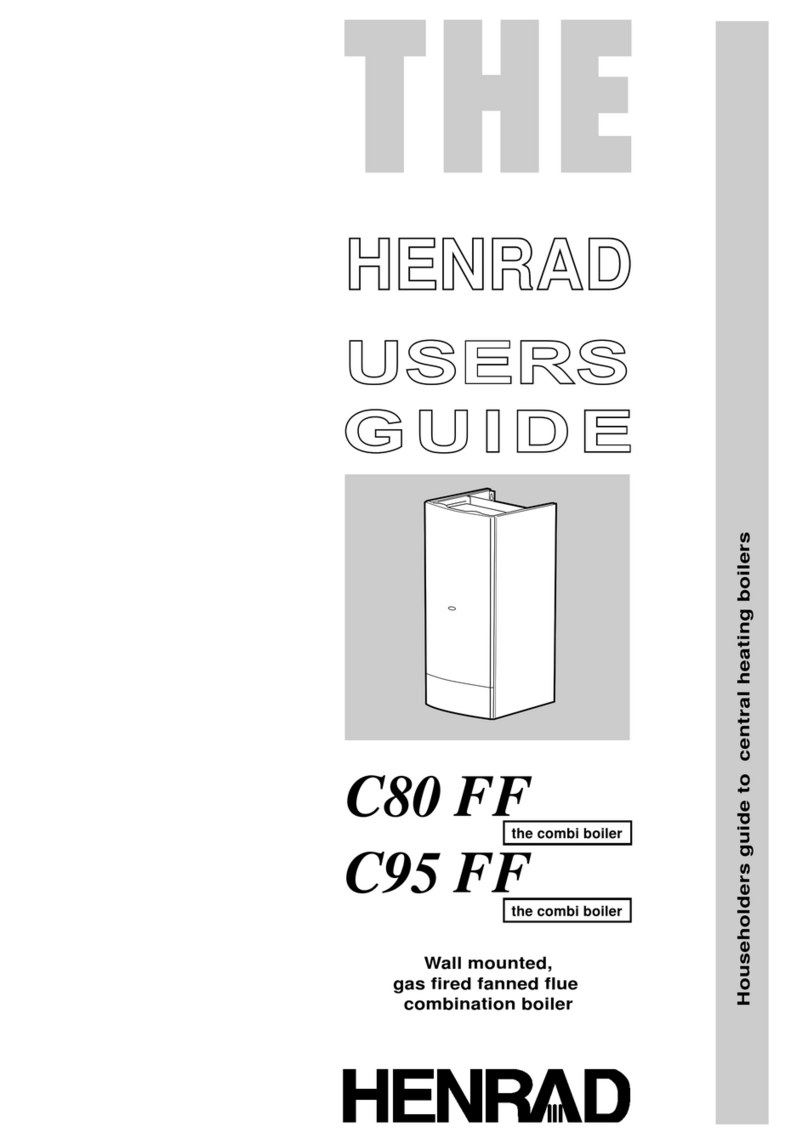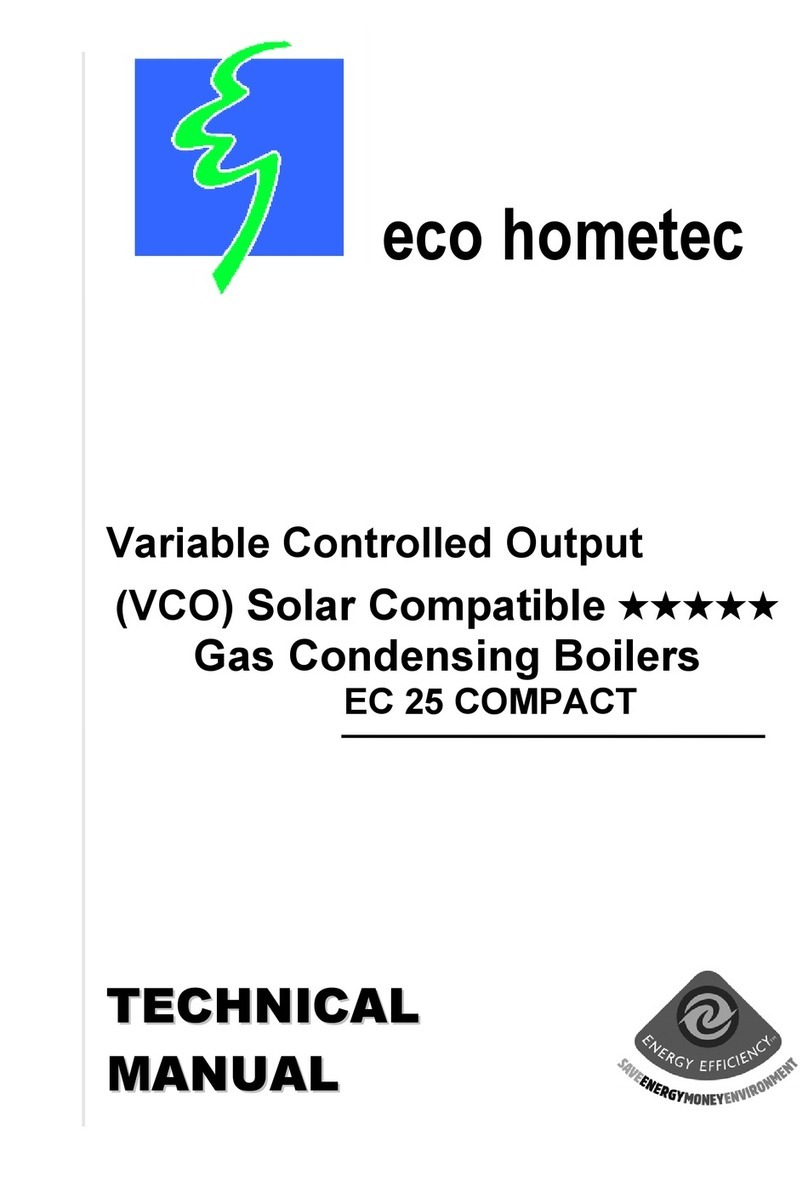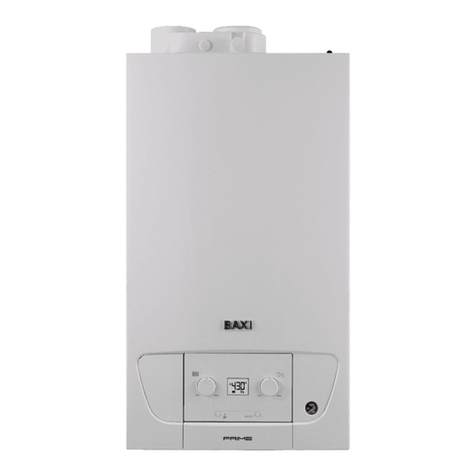
5
OWNER'S INFORMATION cont.
Primary/Secondary Pumping:
• Water enters the unit through the return water
piping, and then travels through a suction guide
with strainer. The end of the suction guide is
removable for strainer access. The strainer
assembly is composed of two parts, the
operational strainer, and the startup strainer,
(located inside the operational strainer) which is
to be removed 24 hours after startup.
• The pump is installed after the suction guide,
and before a combination valve (Flo-Trex). This
combination valve acts as isolation valve, check
valve, and flow balancing valve. The boiler is
placed after the combination valve in the water
circuit.
• The primary/secondary pumping option
provides variable flow to the system. It consists
of a constant flow pump for the boiler, and a
variable flow pump for the building. The AAON
controls package senses differential pressure
across the pump with pressure transducers
installed at the suction and discharge, and varies
the speed of the pump using a VFD in order to
maintain a given differential pressure across the
pump.
• The primary/secondary pumping package is
essentially composed of two piping loops
coupled together. The primary loop has a
constant flow rate in order to maintain water
temperature through the boiler, and the
secondary, variable flow loop, provides water to
the building. The two loops are coupled via a
water line that compensates for excess flow in
either loop. As the flow in the secondary loop
increases above the flow in the primary, excess
flow bypasses the building loop and circulates
through the primary loop. If on the other hand,
the flow in the secondary loop decreases below
the primary loop, flow will bypass the boiler.
• The secondary pump has its own suction guide,
combination valve, and isolation valve, similar to
the primary pump, with the addition of an air
separator to remove any air that is entrapped in
the water.
• See appendix for additional information on
installation, operation and maintenance of
pumps.
Make-up Water:
• A city make-up water connection is provided to
replace water that is lost from the system.
• Glycol units require a glycol feeder (optional
factory installed or field installed) to replace
fluid that is lost in the system. Make-up water
should not be added to glycol applications as this
would dilute the glycol concentration and
thereby increase the freezing temperature of the
fluid.
• The make-up water connection is provided with
a backflow preventer that has isolation valves on
the inlet and outlet for service. The chart below
shows the pressure drop versus flow rate for the
backflow preventer.
• There is a pressure-reducing valve after the
backflow preventer. This valve reduces the city
water pressure to maintain the operating pressure
of the system. This valve is adjustable from 10-
35 psig with a factory setting of 30 psig. The
system pressure varies with the height of the
system. The pressure-reducing valve setting
should be set so that the pressure at the high
point in the system is high enough to vent air
from the system (usually 4 psig). There should
be air vents at all parts in the system where air
could be trapped. If the pressure is not high
enough throughout the system, flashing could
occur in the piping or the pump could cavitate.
There is an isolation valve on the inlet and outlet
of the pressure-reducing valve for service.
• The pressure reducing valve fills the system at a
reduced rate. There is a bypass around the
pressure reducing valve for the initial fill of the
system to increase the initial fill speed. After the
initial system fill, this valve should be closed.
